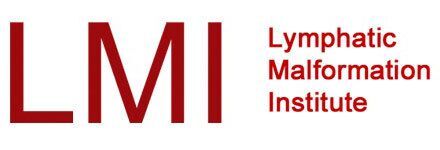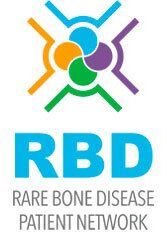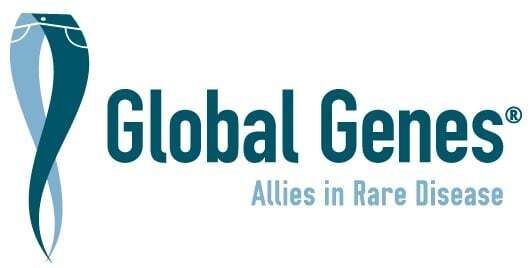
Dr. Paloma Triana, Children’s Hospital La Paz, presented at the LMI/LGDA International Scientific Conference on Complex Lymphatic Anomalies.
Introduction
In recent years, medical science has made significant strides in the treatment of patients with vascular anomalies, particularly those associated with PIK3CA gene variants (mutations). These anomalies encompass a group of rare diseases characterized by vascular malformations accompanied by overgrowth, stemming from variants in the PIK3CA gene. The variants are mosaic, meaning they occur in only some cells of the body, giving rise to a diverse range of abnormalities that can manifest in various tissues and locations. The clinical manifestations of these anomalies are not limited to physical deformities but also include complications such as pain, recurrent infections, thrombosis, bleeding, and functional impairment.
The PIK3CA-related overgrowth spectrum (PROs) includes several distinct conditions Traditional management approaches for patients with these anomalies have involved surgical debulking of overgrown tissues, sclerotherapy, and laser treatments. However, these are stop gap measures and can lead to substantial morbidity. To minimize the harm inflicted by aggressive treatments and reduce associated mortality, physicians have increasingly turned to pharmacological therapies.
Alpelisib: A Targeted Treatment
As disorders in the PROs spectrum share a common denominator – variants in the PIK3CA gene – it has become logical to consider targeted therapies that focus on inhibiting this gene. One such inhibitor is Alpelisib also called ViJoice, which primarily targets the hyperactive PIK3CA gene. Alpelisib has also been used to treat breast and other cancers that share PIK3CA gene variants. Subsequently, it has shown promise when used in some patients with vascular anomalies.
A group of investigators in France initially administered Alpelisib to an animal model and, later, to 19 patients diagnosed with PROs. They showed treatment with Alpelisib led to a reduction in the size of vascular anomalies and decreased overgrowth, creating enthusiasm for this novel treatment approach. Subsequently, the pharmaceutical company Novartis initiated a program that provided Alpelisib as compassionate use to patients with severe and progressive PROs.
In 2019, a retrospective study was conducted to evaluate the response of PROs patients who received Alpelisib through compassionate use. The study defined a positive response as a reduction of at least 20% in the volume of the target lesion. Of the 57 patients included from around the world, 37% achieved this primary objective. However, almost 75% experienced some reduction in the size of their target lesions, regardless of the extent. More importantly, all patients reported significant improvement in their symptoms. Although several patients experienced adverse events, only 38% of these were considered related to Alpelisib. The most common side effects were diarrhea, hyperglycemia, and mucositis.
Promising Results and Ongoing Research
In 2021, a clinical trial was initiated to further investigate the efficacy, safety, and pharmacokinetics of Alpelisib in patients with PROs. The study aimed to assess whether Alpelisib could reduce the size of target lesions, improve signs and symptoms, and minimize severe adverse events. This trial is still ongoing, and the results will provide valuable insights into the potential of Alpelisib in treating these patients .
In April 2022, the United States Food and Drug Administration (FDA) approved the use of Alpelisib in PROs patients based on the results of the retrospective study and preliminary findings from the clinical trial. We are now eagerly awaiting its approval in Europe.
Our Experience with Alpelisib
In our clinic, we have treated 61 patients with Alpelisib, primarily for PIK3CA-related anomalies. Patients ranged in age from children to adults, with a mean treatment duration of 18 months. Pediatric patients typically started with a lower initial dose (50-100 milligrams), while adult patients began with higher doses (150-200 milligrams). Over time, the dosage was adjusted. Patients were categorized based on their specific phenotype, considering the presence of vascular malformations and overgrowth.
Patients with lipomatosis, facial infiltrating lipomatosis, lymphatic malformations, combined malformations, CLOVES, and CLAPO were included in our study. The most common symptoms among all groups included physical deformities, pain, and inflammation. A significant portion of patients underwent surgical procedures, while some required sclerotherapy. It is important to note that almost a quarter of our patients received other pharmacological therapies, particularly Sirolimus.
Promising Responses and Adverse Events
The response to Alpelisib treatment was generally promising, with 75% of patients experiencing a reduction in the size of their target lesions, as well as significant improvements in their symptoms. While 23% remained stable in terms of symptoms, only two patients exhibited disease progression, characterized by an increase in the size of their affected limbs due to neoplastic growth, albeit with overall symptom improvement.
Our evaluation also included other parameters such as a decrease in coagulopathy and venous thrombosis, and significant improvements were noted. Adverse events occurred in 65% of our patients, though none were severe (Grade 3 or 4). The most frequently reported side effects were alopecia, diarrhea, other dermatological issues, and loss of appetite. Hyperglycemia, considered one of the most common side effects, was experienced by only 8% of patients, with metformin needed in just 4 cases.
Conclusion
In conclusion, Alpelisib has emerged as a promising treatment for patients with PIK3CA-related anomalies, offering relief from both the size of target lesions and the associated symptoms. While not all patients achieved a 20% reduction in lesion volume, nearly all experienced an improvement in their overall condition. However, determining which patients should receive Alpelisib, when it should be administered, and for how long remain essential questions that ongoing clinical trials hope to answer. The approval of Alpelisib by the FDA in the United States marks a significant milestone, and we anticipate similar approvals in Europe in the near future.






